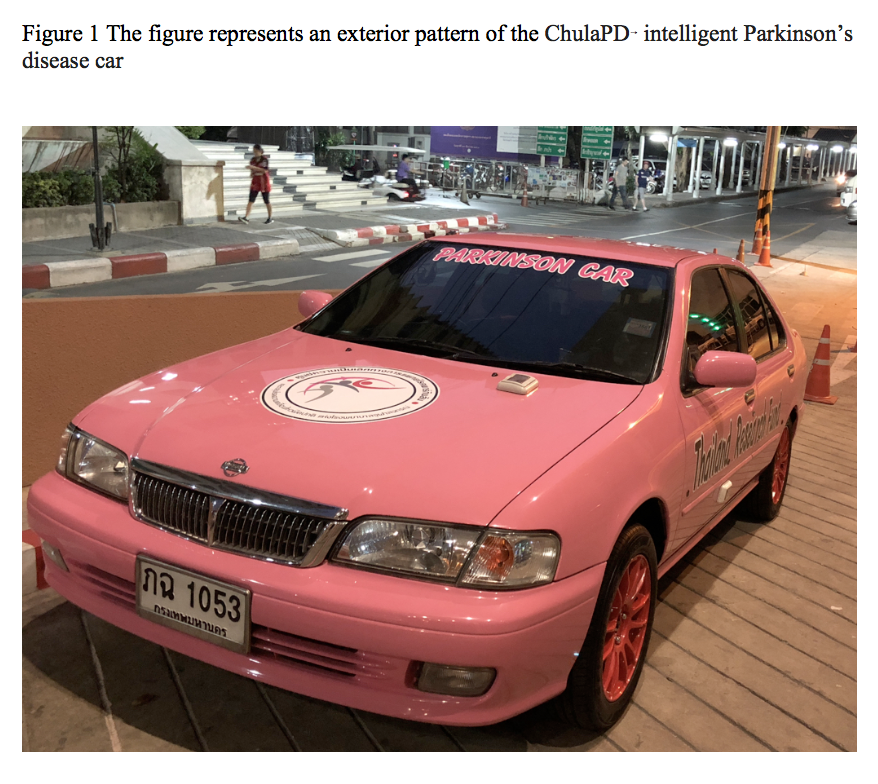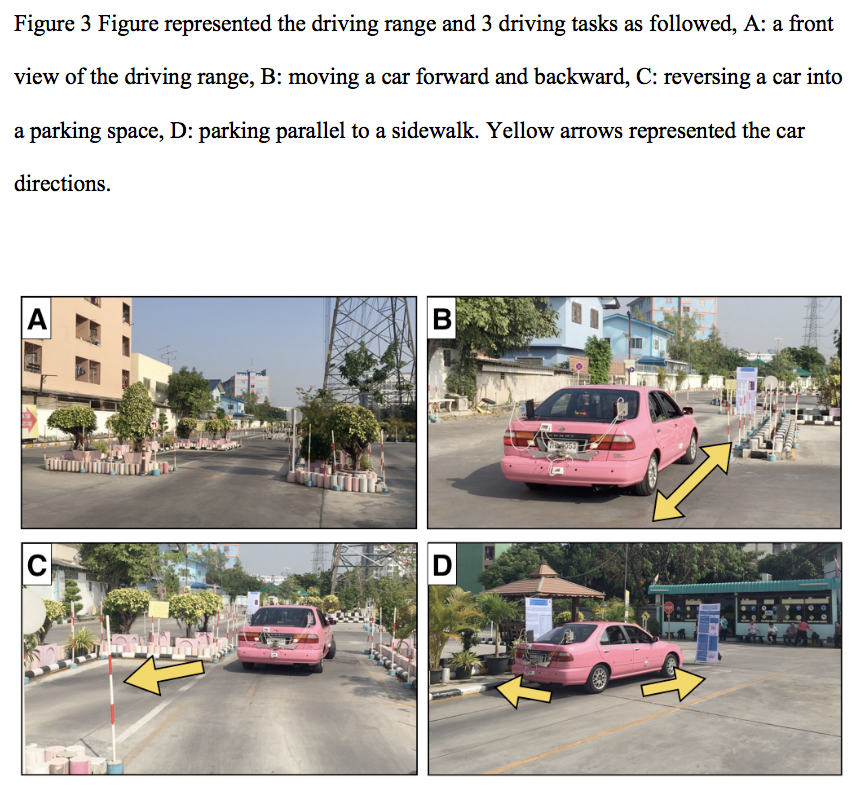Session Information
Date: Saturday, October 6, 2018
Session Title: Parkinson’s Disease: Clinical Trials, Pharmacology And Treatment
Session Time: 1:45pm-3:15pm
Location: Hall 3FG
Objective: To examine the naturalistic driving performance in PD patients compared to controls and to determine if the PD patients showed diminished abilities.
Background: Competence to drive a motor vehicle is a great concern to Parkinson’s disease (PD) patients. Naturalistic driving is a preferred assessment method that evaluates patient’s driving competency in real situations.
Methods: This study compared naturalistic driving performance of 10 PD patients and 10 healthy age-matched controls using the ChulaPD intelligent PD car. The ChulaPD PD car is a four-door sedan car with an electronic computerized system installed to provide a detailed history of driver performance and vehicle operation (Add Fig). Recorded data includes: 5 dashboard cameras, trip start and end times, vehicle speeds, acceleration times, braking times, steering wheel motion sensors, location sensors, and parking sensors. Driving assessments were in accordance to the standard protocol of the Department of Land Transport of Thailand, consisting of moving a car forward and backward, reversing a car into a parking space, and parking parallel to a sidewalk. Demographic data and driving parameters were included in the analysis.
Results: There were no statistically significant differences between PD patients and the control group in the following factors: age, gender, holding a driver license, current driving status, TMSE score, and duration of driving (p> 0.05, each). A comparison of the performance of the two groups revealed that all participants drove in the same routes determined by a similar degree of latitude (p= 0.353) and longitude (p= 0.684), but PD patients required a longer total driving time to accomplish the three driving tasks (p= 0.002), had slower car speed (p= 0.002), and higher braking time (p=0.007) than controls. Significantly lesser in the brake pressure was found in PD patients compared to controls (p=0.009). While reversing a car into a parking space, PD patients showed a significantly higher number of attempts compared to controls (p<0.001).
Conclusions: Our pilot study demonstrates diminished performance of PD patients during real-life driving situations that could potentially contribute to the traffic collisions. Determination of a patient’s driving competency is essential for the safety of PD patients who drive and those with whom they share the roads.
References: 1. Crizzle M, Myers A. Examination of naturalistic driving practices in drivers with Parkinson’s disease compared to age and gender-matched control. Accident Analysis and Prevention. 2013;50:724-31. 2. Heikkila VM, Turkka J, Korpelainen J, Kallanranta T, Summala H. Decreased driving ability in people with Parkinson’s disease. J Neurol Neurosurg Psychiatry. 1998;64(3):325-30. 3. Madeley P, Hulley JL, Wildgust H, Mindham RH. Parkinson’s disease and driving ability. J Neurol Neurosurg Psychiatry. 1990;53(7):580-2.
To cite this abstract in AMA style:
O. Jitkritsadakul, S. Krootjohn, P. Yanthitirat, C. Anan, R. Bhidayasiri. Exploring the utility of the ChulaPD intelligent Parkinson’s disease car to determine naturalistic driving ability in Parkinson’s disease patients: A pilot study of 10 patients [abstract]. Mov Disord. 2018; 33 (suppl 2). https://www.mdsabstracts.org/abstract/exploring-the-utility-of-the-chulapd-intelligent-parkinsons-disease-car-to-determine-naturalistic-driving-ability-in-parkinsons-disease-patients-a-pilot-study-of-10-patients/. Accessed December 16, 2025.« Back to 2018 International Congress
MDS Abstracts - https://www.mdsabstracts.org/abstract/exploring-the-utility-of-the-chulapd-intelligent-parkinsons-disease-car-to-determine-naturalistic-driving-ability-in-parkinsons-disease-patients-a-pilot-study-of-10-patients/




